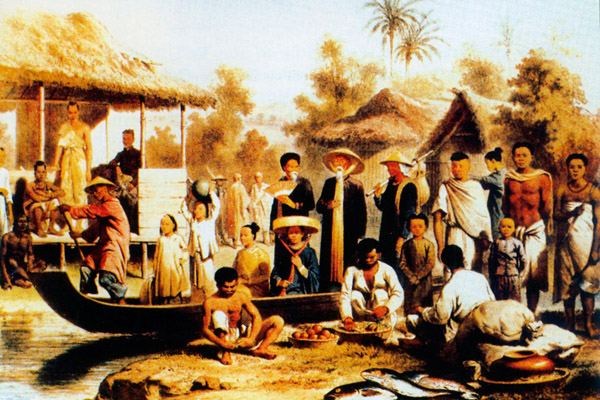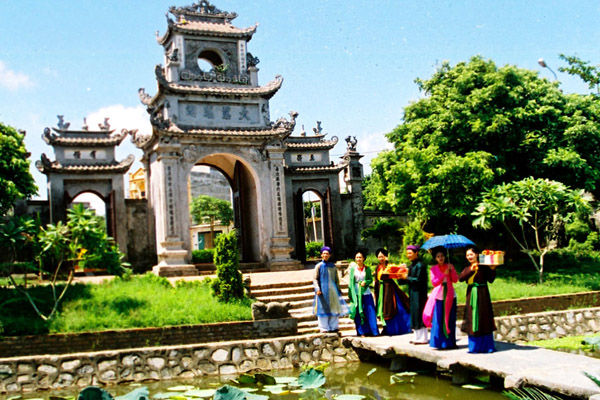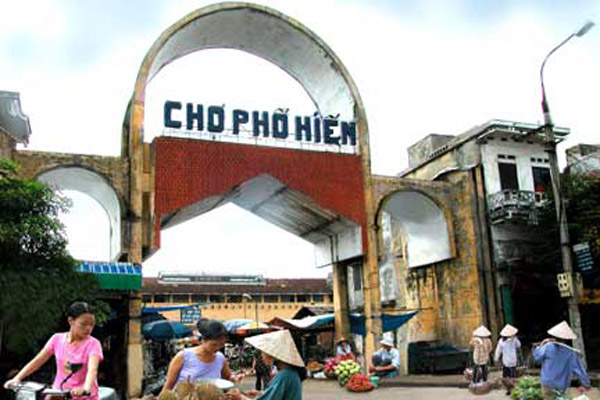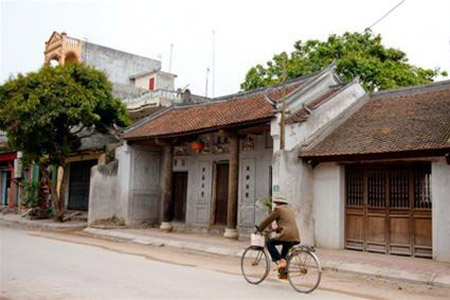Foreign tourists coming through Hue and Da Nang are likely to hurry directly to Hoi An to view an almost intact ancient port city. Obviously they are unaware of the existence of Pho Hien, a rival commercial centre in the North which came into being in about same period, and which was “second only to the capital” as a proverb says.
The period was the 17th-18th century when, under the nominal rule of the Le Dynasty, the country was divided into two parts – the North or Dang Ngoai (Outer Region) dominated by the Trinh Family and the South (Inner Region) governed by the Nguyen Family.

The period saw the emergence and development of Pho Hien whose ruins are scattered in the present town of Hung Yen some 50km east of Hanoi on the other side of the Red River.
Research on Pho Hien is just beginning. Preliminary studies were made in 1968 by Teachers’ College 1. In 1989 and early 1992 initial excavations were conducted by the cultural department in Hai Hung province during which archaeologists discovered old bricks, sub foundations and Vietnamese and foreign potteries. Then, all research was halted because of lack of funding.
In late 1992 an inter-disciplinary seminar was organized at Hung Yen where researchers were able to compare notes on official documents and other sources of information of the time.
Click here for Tour operator in Vietnam or Vietnam Tour Company or continue ready the articles
The court documents and old monographs presented at the seminar were not very informative because they dealt mostly with court policies regarding merchant ships from foreign lands.

Much more important were the written or verbal sources preserved at Pho Hien: they included family records, inscriptions on 74 stelae dating back to 1625, 1682, 1709 and 1711, oral stories, festivals and rituals, manners and customs and some 60 architectural works (communal houses, pagodas, Chinese meeting halls, tombs), 5 stone bells. 21 bronze bells, and 160 decrees issued by the court in honor of local genie.
Pho Hien (Pho: port city, town, street) was first mentioned in the inscription on a stele erected at Thien Ung Pagoda in 1625. Long before the town came into being the place had been inhabited by fisher folk – as indicated by such geographical names as Ben Van (Fishermen’s Landing) and Cho Van (Fishermen s Market) and by rice farmers.
In the 10th century the place became the fief of warlord Pham Phung At. Three centuries later Chinese refugees founded a village there before it was turned into the administrative seat of a flourishing market-town.
In the 16th century when countries in the West, among them Portugal, Holland, Spain, England and France were stepping up maritime trade with Asia. Pho Hien was influenced by these fervid activities although, unlike Hoi An, it was located outside the circuit.
For their part the Trinh Family was seeking to develop trade for money to arm themselves against the Nguyen in the South. And since they did not allow the establishment of foreign trade offices in Thang Long – the capital of the country – Pho Hien automatically became an outpost and the most important commercial centre in the North which rose to its apex in the 17th century.

The Dutch established themselves there from 1637 to 1700, and English from 1672 to 1683. The French came in 1680. English merchant William Dampier reported that Pho Hien counted 2000 houses, a garrison, a beautiful house inhabited by two bishops.
Altogether 35 Japanese junks called at Pho Hien and other northern ports between 1604 and 1634. Other merchantmen came from Siam, Malaya, the Philippines and Portugal.
The Chinese, many fleeing the Manchu regime in their home country in order to remain loyal to the Ming dynasty, came very early, and their influence soon became predominant, especially after Japan had banned her ships from engaging in external trade. They acted as intermediaries for foreigners and, in many cases, went native.
Through Pho Hien came luxury goods for the Court, weapons and ammunition for the army, gold, silver, copper, medicines, porcelains and Chinese textiles. Exports included spices, ceramics and silk products.
Then, at the turn of the 18th century, Pho Hien began its descent, with the closing of foreign trade posts and the absence of foreign shipping.
The decline was caused by many factors. From 1730 onwards the country was rocked by successive peasant revolts. Meanwhile, other East Asian countries like China and Japan had become more competitive. Countries in the West, for their part, were busy with industrialisation at home.
Caught in this international competition, Vietnamese products lost all their attractiveness.

